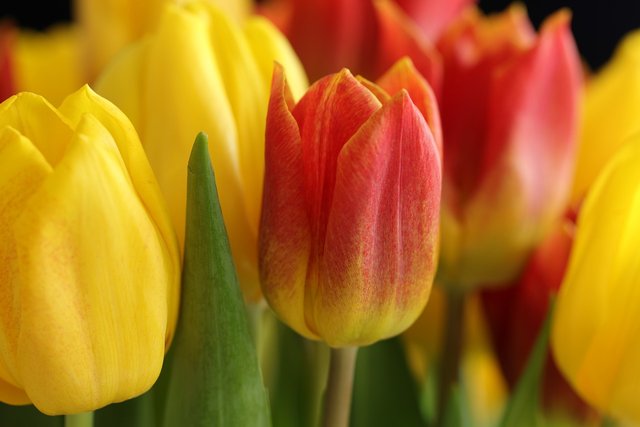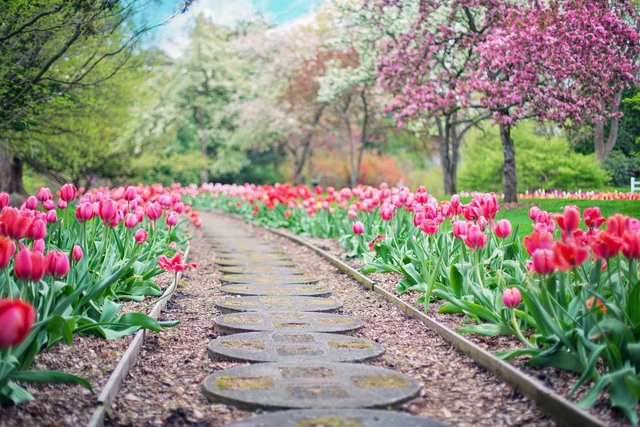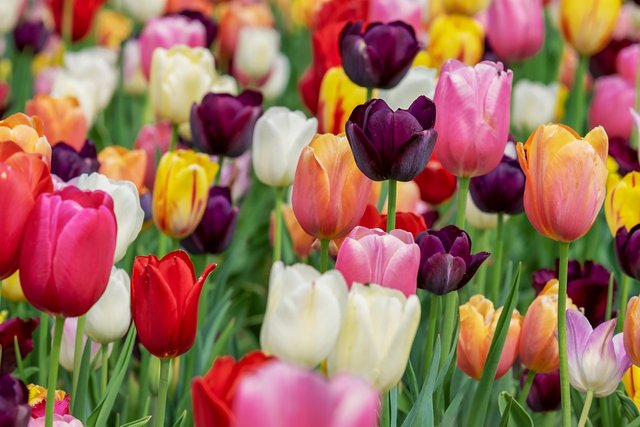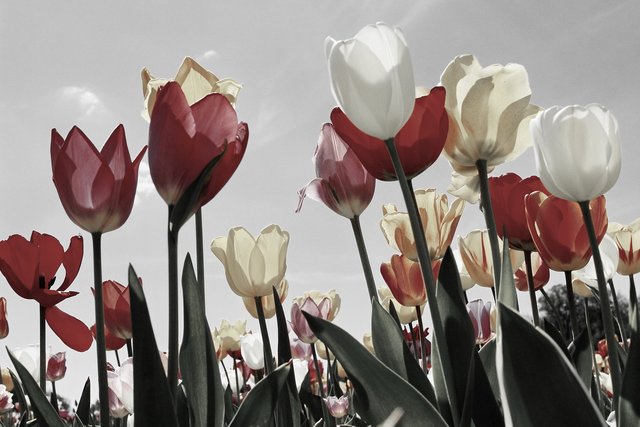Tulips: Beauty, Symbolism and Care
Tulips are one of the most admired flowers in the world, known for their vibrant colors and elegant shapes. Native to Central Asia, these bulbs have become a symbol of spring and one of the most popular options for gardening and floral decorations. Tulips come in a wide variety of colors, from the most classic ones like red and yellow, to more unusual shades like purple and black, which allows them to adapt to any type of space or decorative style.

Symbolism of Tulips
Tulips are more than just a decorative flower. Throughout history, they have been a symbol of perfect love and rebirth. In the language of flowers, each tulip color has its own meaning: the red tulip symbolizes true love, the yellow symbolizes happiness and friendship, while the purple is associated with royalty and luxury. In some countries, tulips are also a sign of prosperity and good luck.
Tulip Varieties
There are more than 100 species and thousands of varieties of tulips, each with particular characteristics. The most common include:
- Single flower tulips: These are traditional tulips, with a single row of petals.
- Double-flowered tulips: They have extra petals that give them a fuller, more pompous appearance.
- Cup tulips: They have an open cup shape, perfect for giving an elegant touch.
- Darwin Tulips: Known for their large, brightly colored flowers, they are ideal for gardens.

Care and Cultivation of Tulips
Tulips are relatively easy to care for, but they do require some care to ensure they bloom in all their glory. Here we leave you some tips for growing it:
- Location: Tulips need a sunny location, since hours of sunlight are essential for their development. Although they can tolerate some shade, they will not bloom as profusely.
- Soil: They prefer well-drained soils. If the soil is very heavy, you can improve the quality of the soil by adding sand or compost.
- Irrigation: Irrigation should be moderate. Tulips do not tolerate waterlogging, so it is important not to overwater, especially after they have bloomed.
- Planting: Tulip bulbs should be planted in autumn, before the first frosts. They are planted at a depth of approximately 10 to 15 cm and should be spaced about 10 cm apart.
- Post-flowering care: After flowering, it is important to cut off the faded flowers, but leave the leaves so that the plant can store energy for the next growth cycle.

Benefits of Tulips in the Home and Garden
Tulips not only beautify the environment, but can also attract pollinators such as bees and butterflies, which is beneficial for biodiversity. Additionally, their bulbs can be saved and reused for several seasons, making them an eco-friendly and economical option for gardeners.
In decoration, tulips stand out as cut flowers for their durability and fresh appearance. They are ideal for centerpieces, wedding bouquets or as part of floral arrangements at special events.

